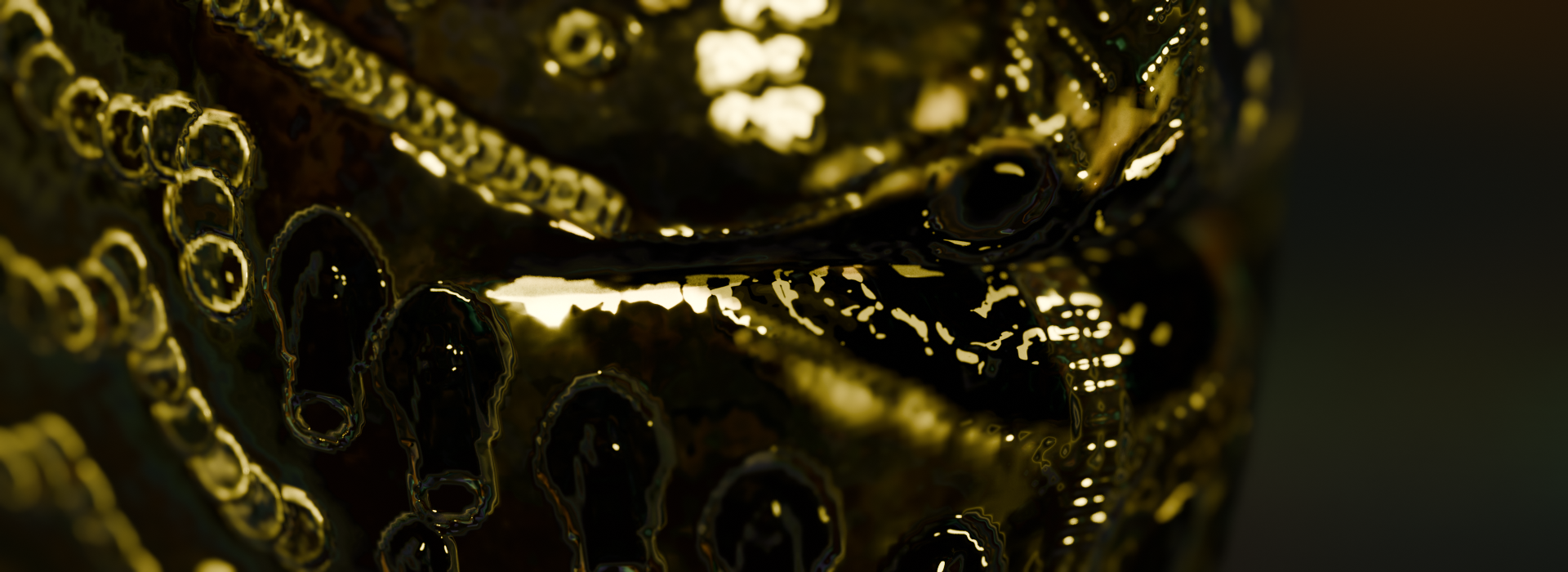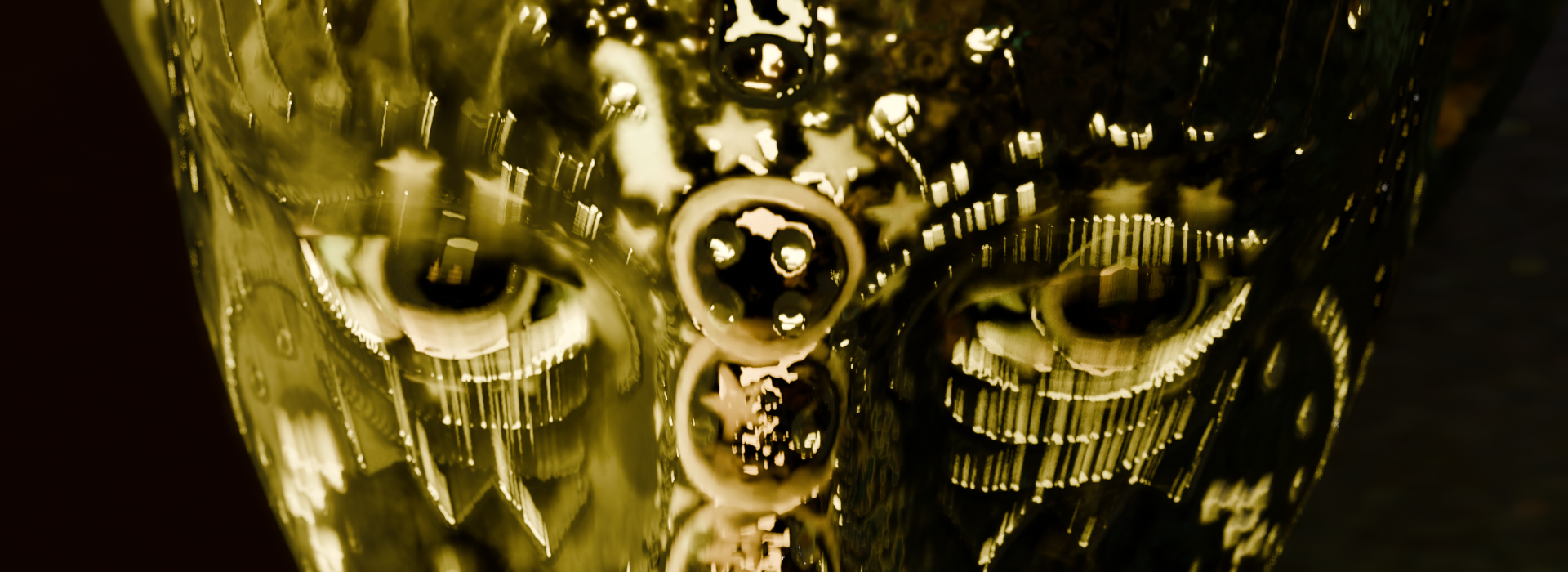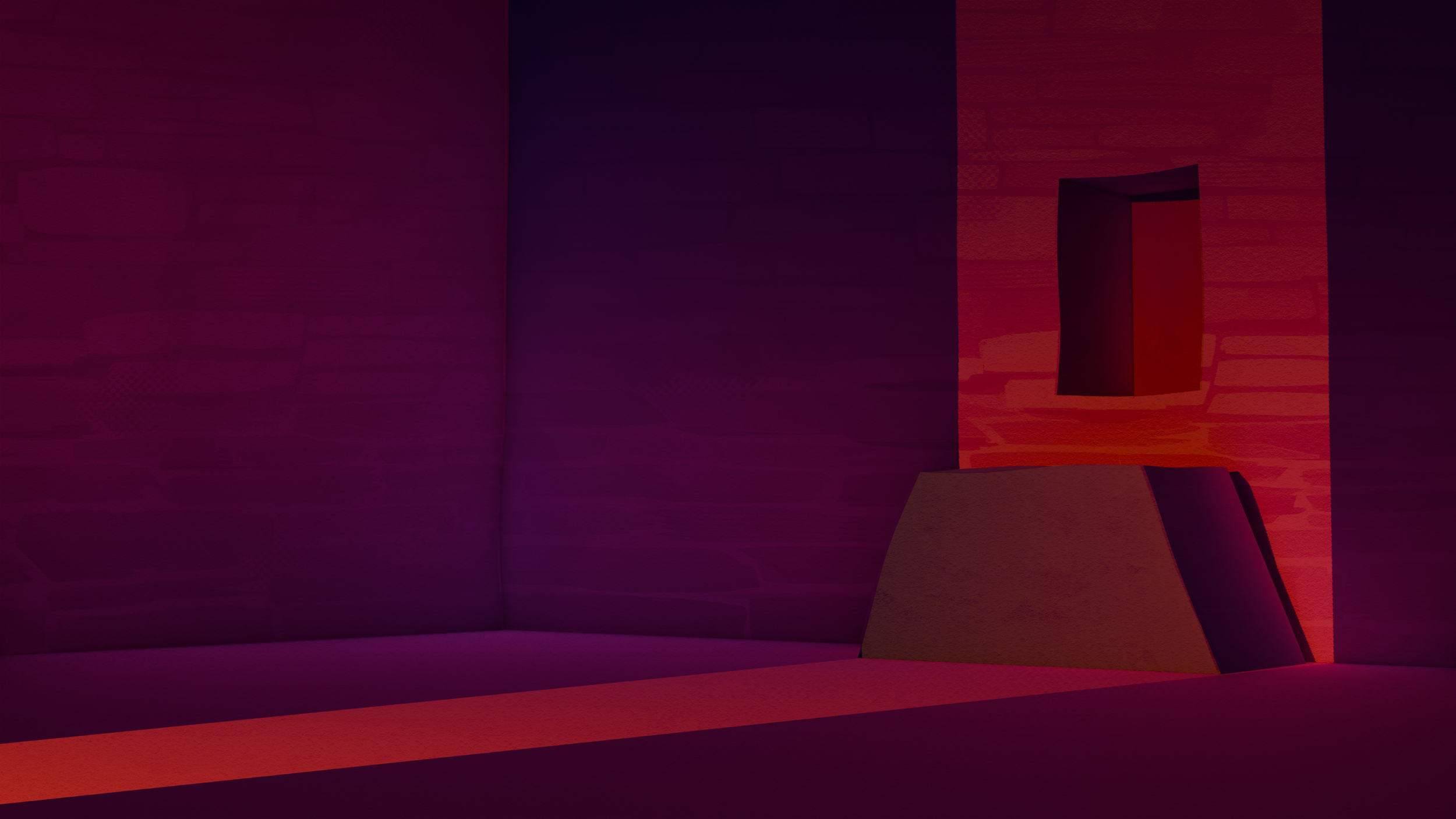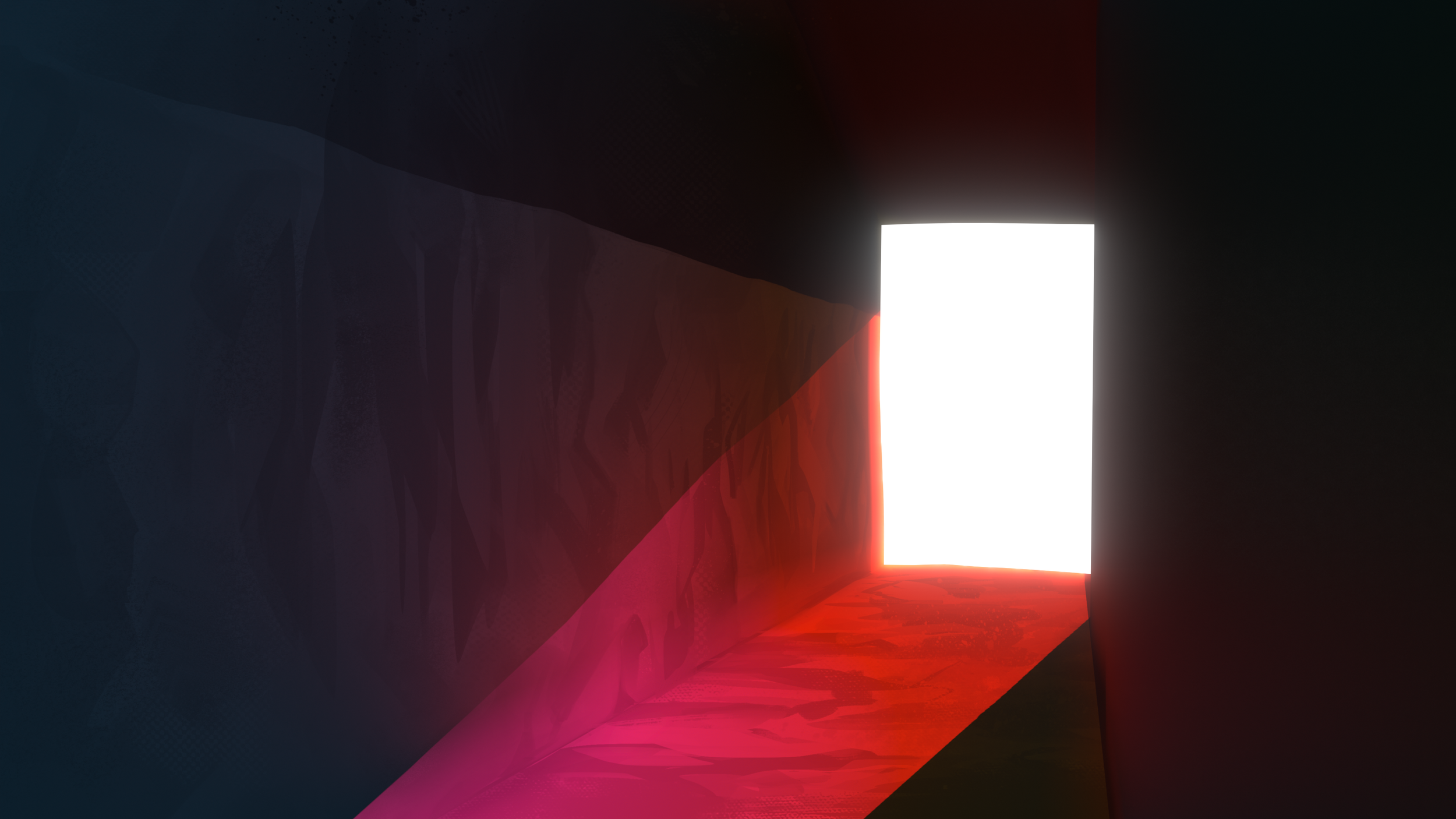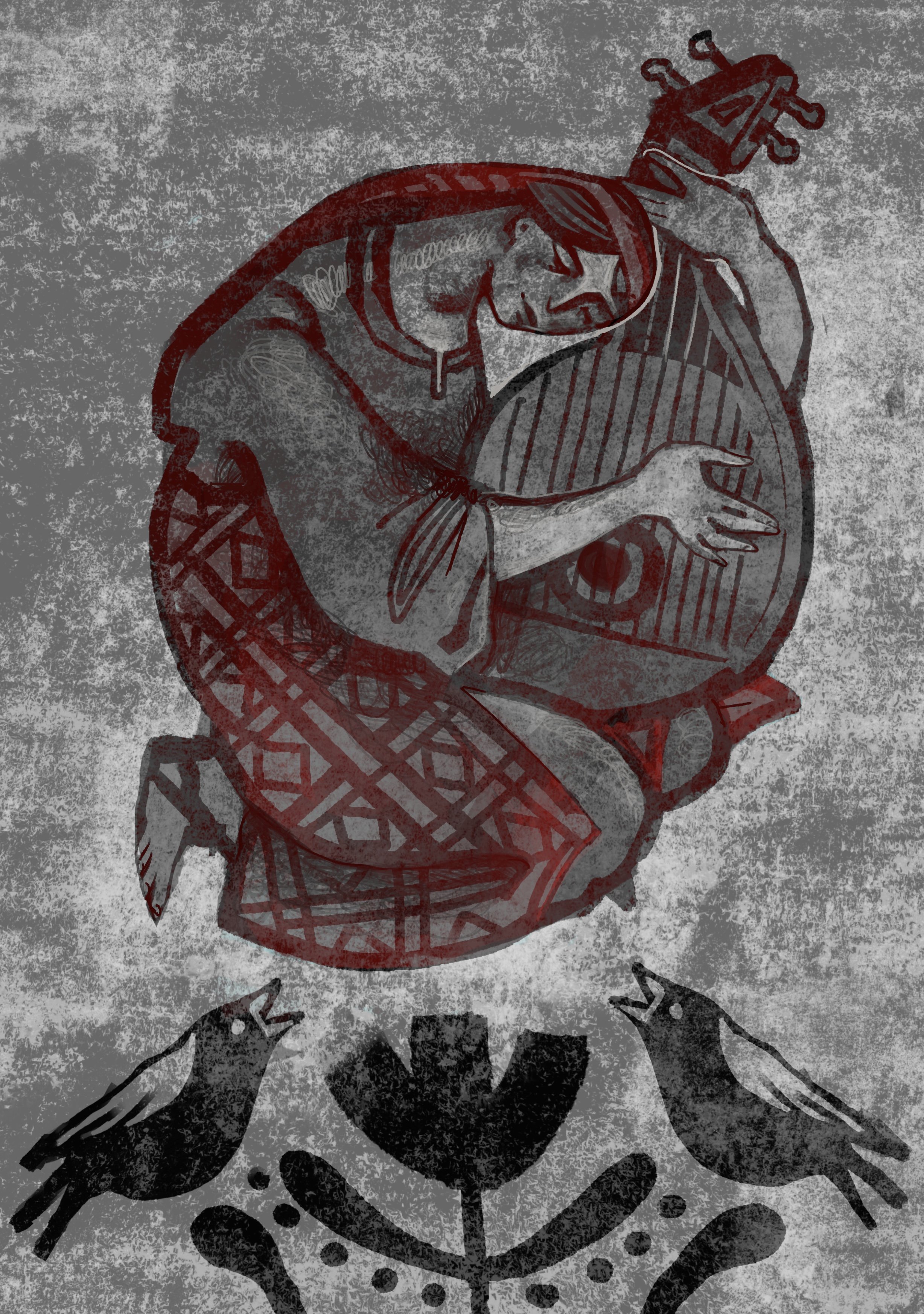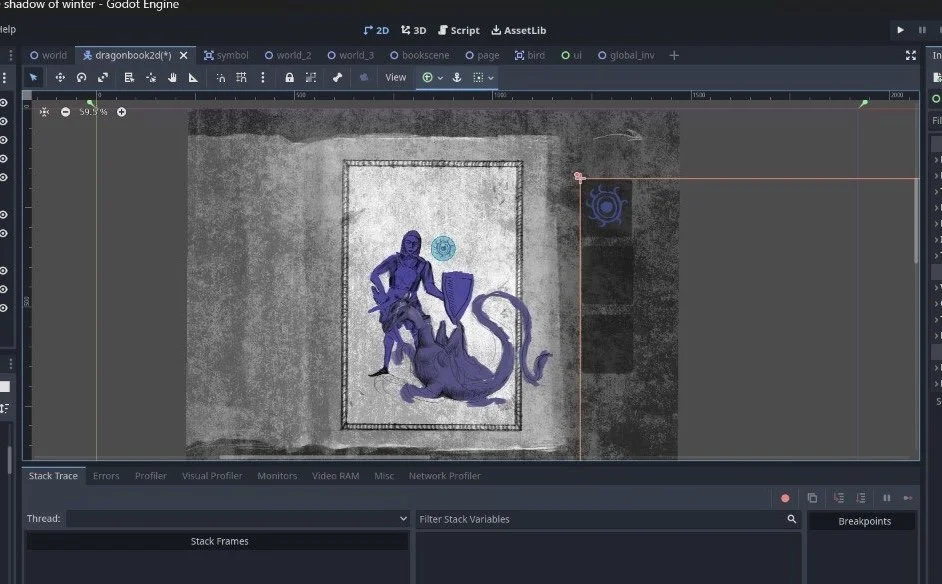ONLINE EXCLUSIVES
Metal People
Lucien Kelman
“Metal person C learns to blink. Using Blender, Substance 3D and FL Studio, I created a video and series of stills to explore a new visual concept. I imagine the Metal People to briefly appear when you rub your eyes too hard, manifesting as tiny dots of light in your field of vision before quickly disappearing.”
Standing Stones
Rey Holness
This short animation is inspired by neolithic monuments, especially Stonehenge and the lesser known Maes Howe cairn in Orkney. Orkney also has many stone circles of its own, including the Ring of Brodgar and the Standing Stones of Stenness, all of which I’m lucky enough to have seen in person. Specifically, I was inspired by their interaction with the sun – many surviving neolithic monuments align with the position of the sun on the winter solstice. In both Maes Howe and Newgrange, a chambered cairn in Ireland, on the longest day of the year the sun shines directly in through the long entranceway and illuminates the back of the main chamber. The first two shots in the animation are inspired by photographs of this phenomenon.
You are – or at least were, when I visited – allowed to touch the stones in the Ring of Brodgar. Actually feeling the weight of them, how utterly unmoving they are beneath your hand, it's hard to imagine them being put here thousands of years in the past. Whatever our ancestors used them for, they must have meant a great deal. Research has shown that many of the stones of Stonehenge are from Wales, and one is from the north-east of Scotland, a distance of more than 700km. It’s easy to imagine prehistoric people as the bumbling cavemen of cartoons, but they must have had incredibly sophisticated communities to make it work.
Seeing these monuments in person, I always feel intensely connected to my fellow humans. Even if I can’t know the significance of these places, I can enjoy the same winter sun as they did.
Документ
Sofiia Boretska
This is a 2D adventure puzzle game with elements of animation, focus on visualization. Players control a character moving between locations, searching for items. The emphasis is on visual storytelling, unfolding frame by frame like a comic. The game also features Folk songs.
"Oh, how it was"
This is an ancient Ukrainian folk song, one of the oldest, called "Koliadky." It tells of the creation of the world, of three blue birds sitting on a sycamore tree in the middle of the sea, contemplating how to create the world.
“"Oh, how it was with the descendants of the world.
Rejoice! Oh rejoice, people, for the World is born!"
Oh, how there was no Earth and no Sky
There was only the Blue Sea
And in the middle of the Sea a Green Sycamore tree.
On the Sycamore tree three Blue Birds”
During the longest winter night when the boundary between two worlds, the sacred and the human, is thinnest, ancestors come to visit the living. The carolers' task(Koliadnik) was to convey the most crucial requests to these spirits - to have a good harvest in the coming year.
People wore ritual costumes and masks, erasing their identity and losing their names, becoming a bridge between the two worlds by embodying spirits symbolizing our ancestors. Our main character couldn't complete the ritual, and his spirit was drawn into the otherworld. Will our protagonist cleanse himself of the spirit and regain his human form and name? Will the spirits he encounters on his journey help him return home?
SPIRITS:
In the sacred realm, the character encounters many spirits, most importantly, three birds (doves) representing characters from an ancient mystical carol(Kolyadka). At their request, our main character must restore this carol by completing quests and collecting keys symbolizing the verses of the carol(Kolyadka) to regain his human form and complete the ritual. Then, they can break the curse and return the protagonist to the human world. At the end of each quest, the birds come to life, transforming into spirits that sing a part of the song.
Why Do We Tell?
Animation & Illustration: Clara Nitsche Music: Benjamin Seeds
Humans have told stories for as long as we have existed, the oldest documentations of cave drawings dating back at least 51.200 years. Likely we told stories and "gossiped” far before that. The reason for this is fairly simple; survival. Both gossip and stories were able to communicate food sources, hunting skills and created the much-needed community that would protect you from the dangers of the outside world.
But why bring ghosts, gods, spirits and such into these stories? Why not make it a sober retelling of your knowledge? Well, there are several reasons for this. For one, appeal; especially children would be far more willing to listen to their parents' reprimands for not going into the woods at dark when an evil wizard was at play. Secondly, we didn't actually have explanations for most natural occurrences that might have scared us. As a result, we got Zeus for lightning, Hades and Anubis for death, Mother Holle for snow, Ratri and Kek for the night, Fear Gorta for hunger and so many more.
Especially for the non-religious, all this might seem a bit silly and out of date nowadays, but your creepypastas, urban legends and horror anthology all have the same origin point; aspects of our day to day lives scare us, whether that is death, war, illness or murder, and when you are sitting at a warm fire with friends it is comforting to imagine an explanation as to why that old man in your hometown went missing. Then, at least you think you know.
